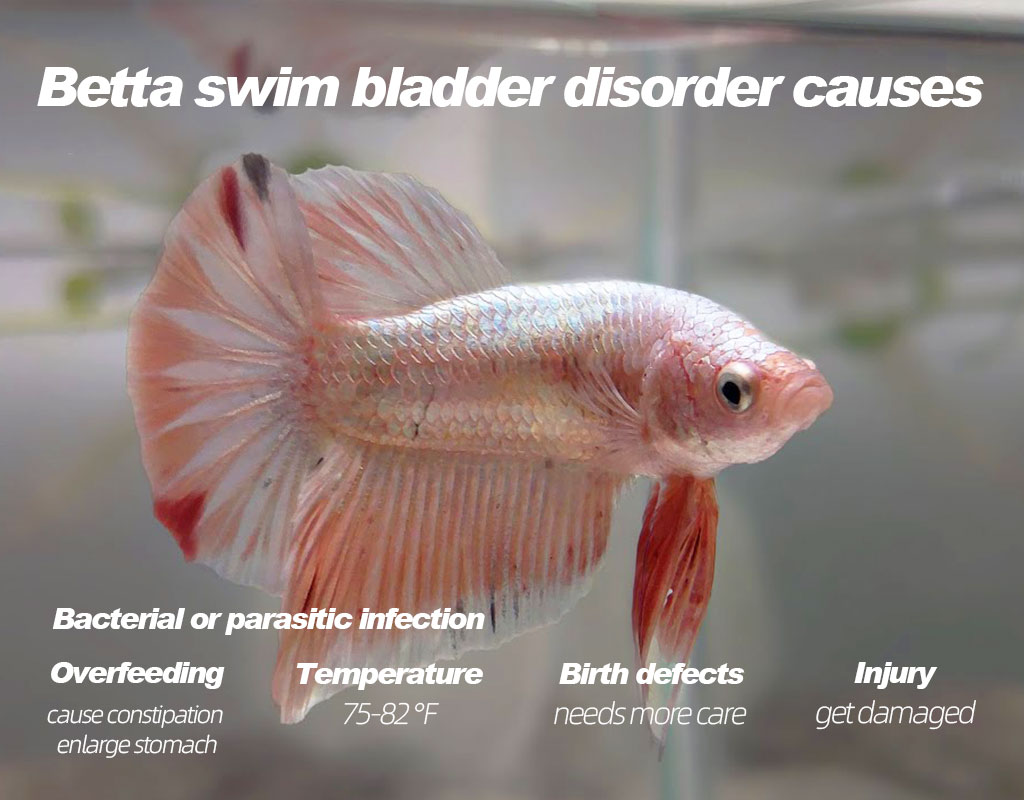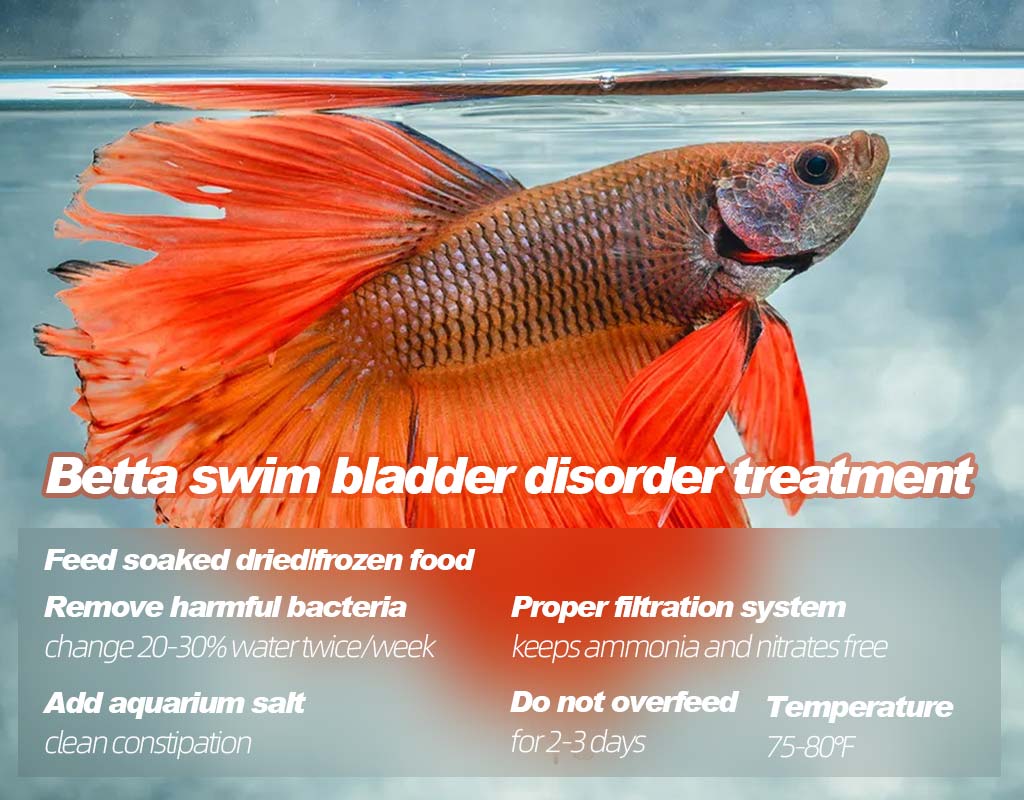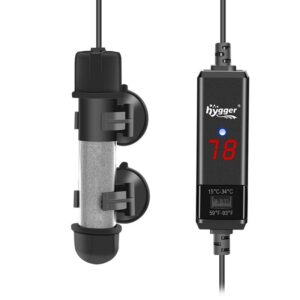We all love to feed our small aquarium companions. The beautiful Betta fish is like always hungry and not stop eating until we stop feeding them. But due to overfeeding, a disorder named “Swim Bladder” occurs. Do not panic, this disorder can be lightly recovered, but if these symptoms were treated irregularly or ignored, there would be a tremendous impact on your fish’s health.
Content Table
Today we are here to share complete knowledge of Betta Swim Bladder Disorder from its symptoms, causes, and ways to cure it. So, stick with this article and keep your betta fish away from these diseases.
What Is Betta Swim Bladder Disorder?
The swim bladder is the body organ of a fish, which helps them maintain balance while swimming. It is the gas-filled organ that also takes part in its respiration process. Thus, the swim bladder is called the Air bladder.
The air bladder is on the dorsal portion of the fish body cavity. This disorder generally occurs in bony fish, including goldfish and betta fish, but cartilaginous fish do not go through swim bladder disorder.
The swim bladder disorder occurs when multiple tissues affect the bladder, which disturbs its buoyancy. This disease is common in goldfish as well as betta fish. Swelling of any organs because of illness or overfeeding will affect the swim bladder. It is curable, but how should we identify this disorder?
What Are the Symptoms of Betta Swim Bladder Disorder?
You might notice your bettas behave abnormally, which makes you very concerned about their health. They start showing weird activities while swimming. Here are some symptoms that are indications of a swim bladder disorder.
- Start swimming sideways
- Sink at the bottom area and standing on their head
- Floating to the surface of the tank water
- Swim upside down
- Start swimming vertically
- Lethargy
- Struggling to maintain a normal position
- Curving their back like an S-shaped spine
- Swollen abdomens
Sometimes, betta fish may intake much air when feeding, filling their organs and making them float upside down. Due to swollen organs, the swim bladder gets affected. It adds pressure on their stomach and indirectly makes digestive difficult, and as a result, the stomach side gets enlarged. Because the swollen organs move at the side of the body, it makes their spine curved and gains an s-shaped look.
What Are the Causes of Betta Swim Bladder Disorder?

Betta swim bladder disorder causes
The main cause of Betta swim disorder is overfeeding and the water parameters. Let us understand the causes of this disorder with the help of the following points:
- Overfeeding
Overfeeding is the root cause of this disorder. Overeating and intake of air while eating make Bettas feel constipation and enlargement of stomach size. If they eat dried or frozen food or contact with water, their stomach would be expanded and cause swimming disorder. Betta fish have the habit of gobbling over their food and are swollen directly, which puts pressure on their stomach and as a result, causes this betta swim disorder.
- Temperature
The temperature of the water also affects their swim bladder. As the temperature gets down the digestion process also slows down, as a result, the gastrointestinal tract gets enlarged due to undigested food which puts pressure on the wall of the swim bladder. Betta fish are sensitive and 75-82 degrees Fahrenheit is good for them, but if changed water temperature, it creates stress on the swim bladder too.
- Bacterial or parasitic infection
Bacteria can also affect the swim bladder of bettas. A quick way to identify this infection is by looking at their feces. Feces of infected betta will be thread structure and also look very pale.
- Birth defects
Most of the double-tailed bettas have swim bladder defects by their birth. Those fish are easily identified and need more care compared to healthy ones.
- Injury
Sometimes they get attacked by other tank mates or get damaged due to aquarium gadgets like a filtration system and more.
How to Cure Betta’s Swim Bladder Disorder?

Betta swim bladder disorder treatment
Swim bladder disorder can be easily monitored through their behavior, and it is curable. We need to make some changes or add habits of regular maintenance, feeding behavior, and some medical uses. The proper way to cure betta fish swim disorder is as follows:
- Do not feed them for 2–3 days
Of course, there is nothing wrong with not feeding them if they suffer from an enlarged stomach. Besides, their digestion will slowly complete, and the stomach will attain normal size.
- The temperature of the tank water
The temperature should be maintained between 75°F to 80°F. By increasing temp up to 80°F, the digestion of betta will be faster. But we should not raise the temperature, as keeping them at a high temp will cause other problems.
- Treat them with the solution of aquarium salt and water
Treating betta in a solution of aquarium salt and tap water would clean constipation. First, we have to mix one tablespoon of salt into a half-gallon of tap water, then mix them and bathe betta fish for 10–12 minutes, and finally put them back in the betta fish tank.
- Feed them soaked dried/frozen food
As we feed them dried frozen food, it expands later in the stomach, causing problems with the swim bladder. We can soak them in water and smash them before feeding, which will make it easy for a betta to digest properly.
- Remove harmful bacteria
Changing 20-30% of the water twice a week would keep the water fresh and aerated and not let any harmful bacteria grow in the tank.
- Proper filtration system
Use a proper fish tank filter and clean up the tank regularly to keep your tank free from ammonia and nitrates, which could keep Betta free from additional stress and health problems.
Thus, these are simple ways to cure our beautiful betta fish. In case we take the suffering bettas to the veterinarian, they will directly scan with x-rays and diagnose the swim bladder’s size and shape with the structure of spines. Through x-rays, they also report if there will be any growth of new bacteria inside their body.
Conclusion
Hope your Bettas will be healthy and happy. We are happy to serve you with this article “Betta Swim Bladder Disorder Causes and Cures” which helps you learn the actual causes and the ways to cure betta disorder. If you have any unanswered questions or want suggestions about products for your betta fish aquarium, please leave your message in the comment section.
FAQ
Is swim bladder disorder contagious to other fish?
-No, this disorder can not be transmitted from one fish to another fish.
Can swim bladder disease fix itself?
-Yes, they can fix it by themselves, as they need some time in the dark to rest and a high temperature for fast digestion. Avoid overfeeding your fish first.
How long can a fish live with swim bladder disease?
-This disorder is temporary but may be permanent to some fish. Fish with permanent disorders can also live happily by adapting their different ways of living.


Leave a comment